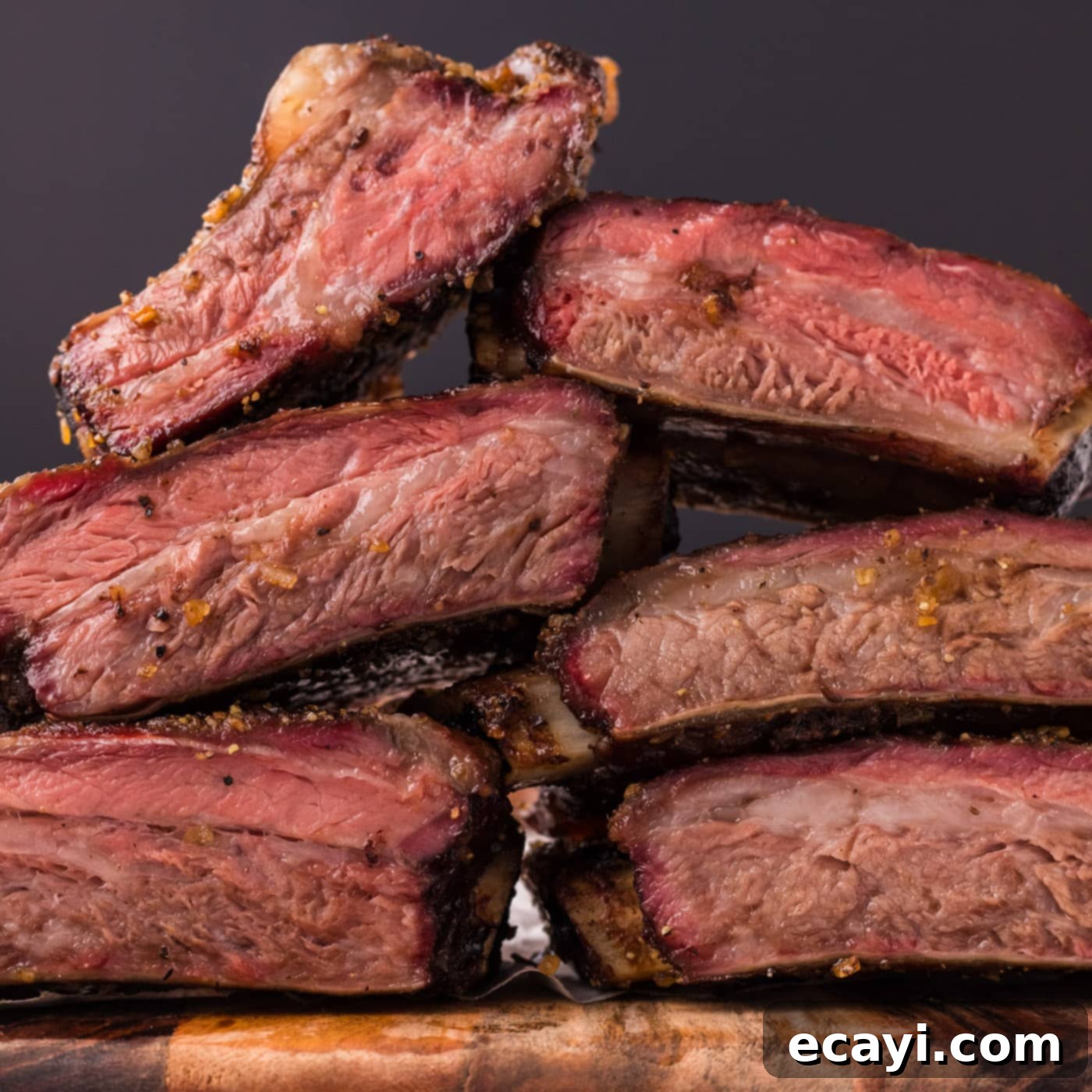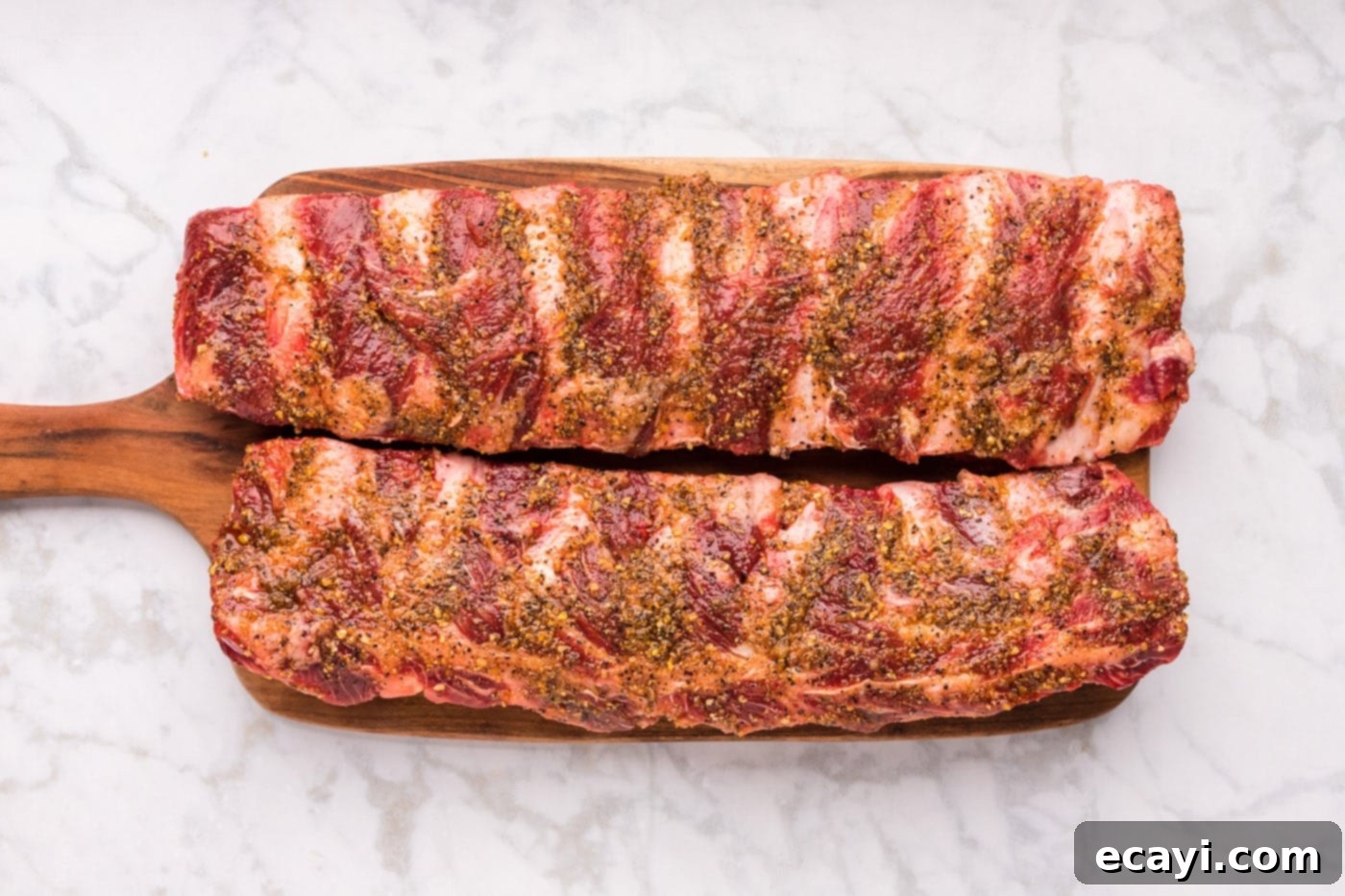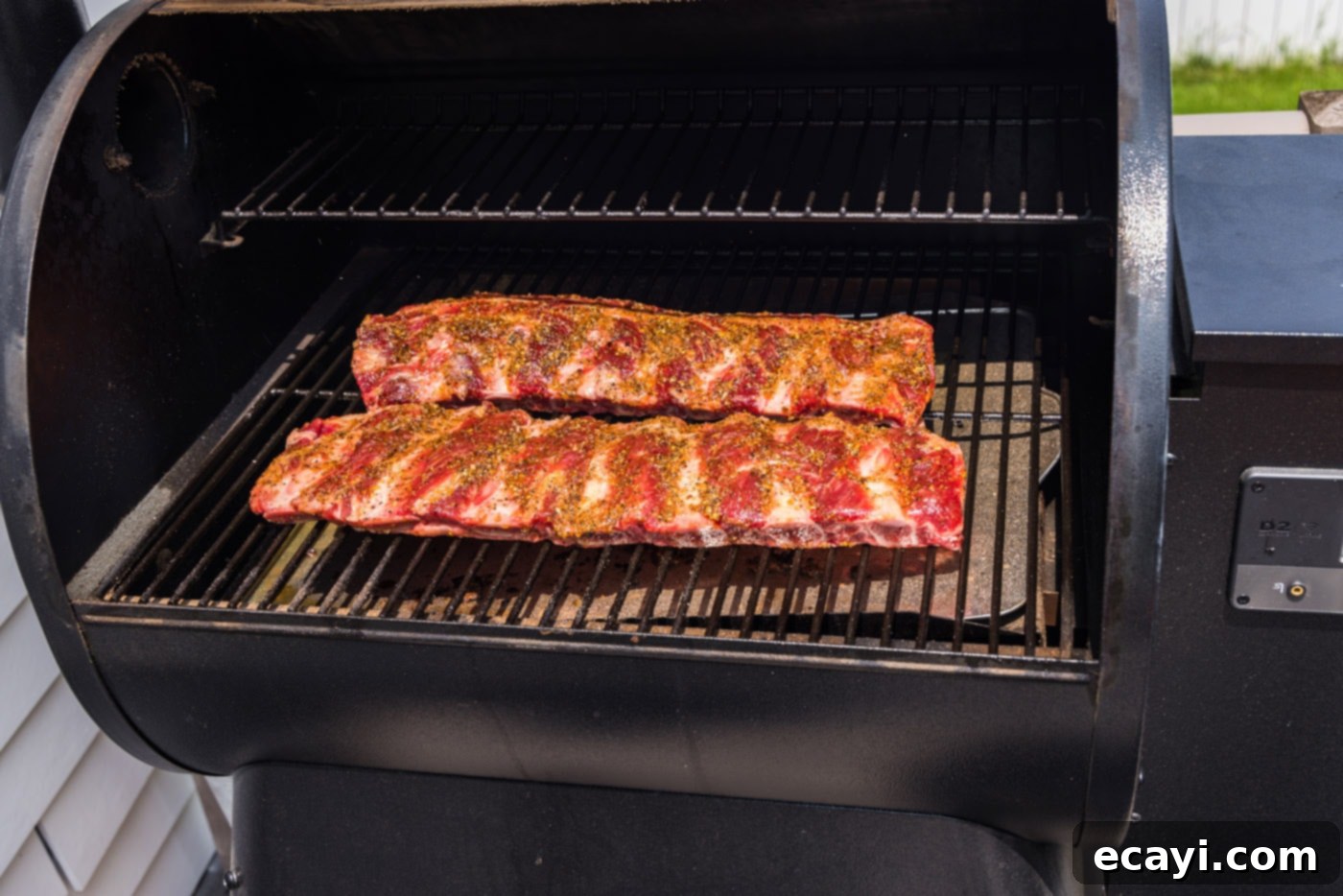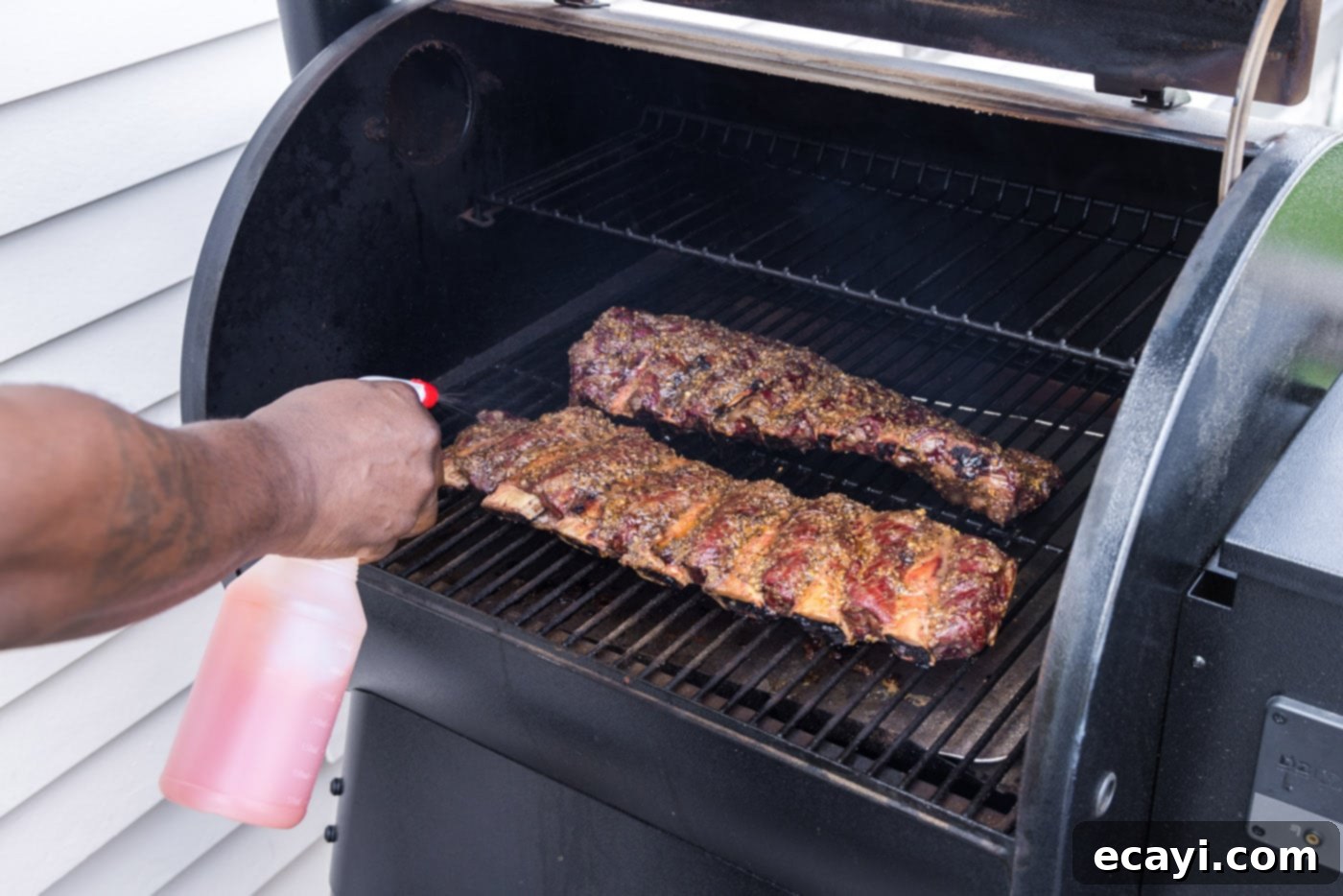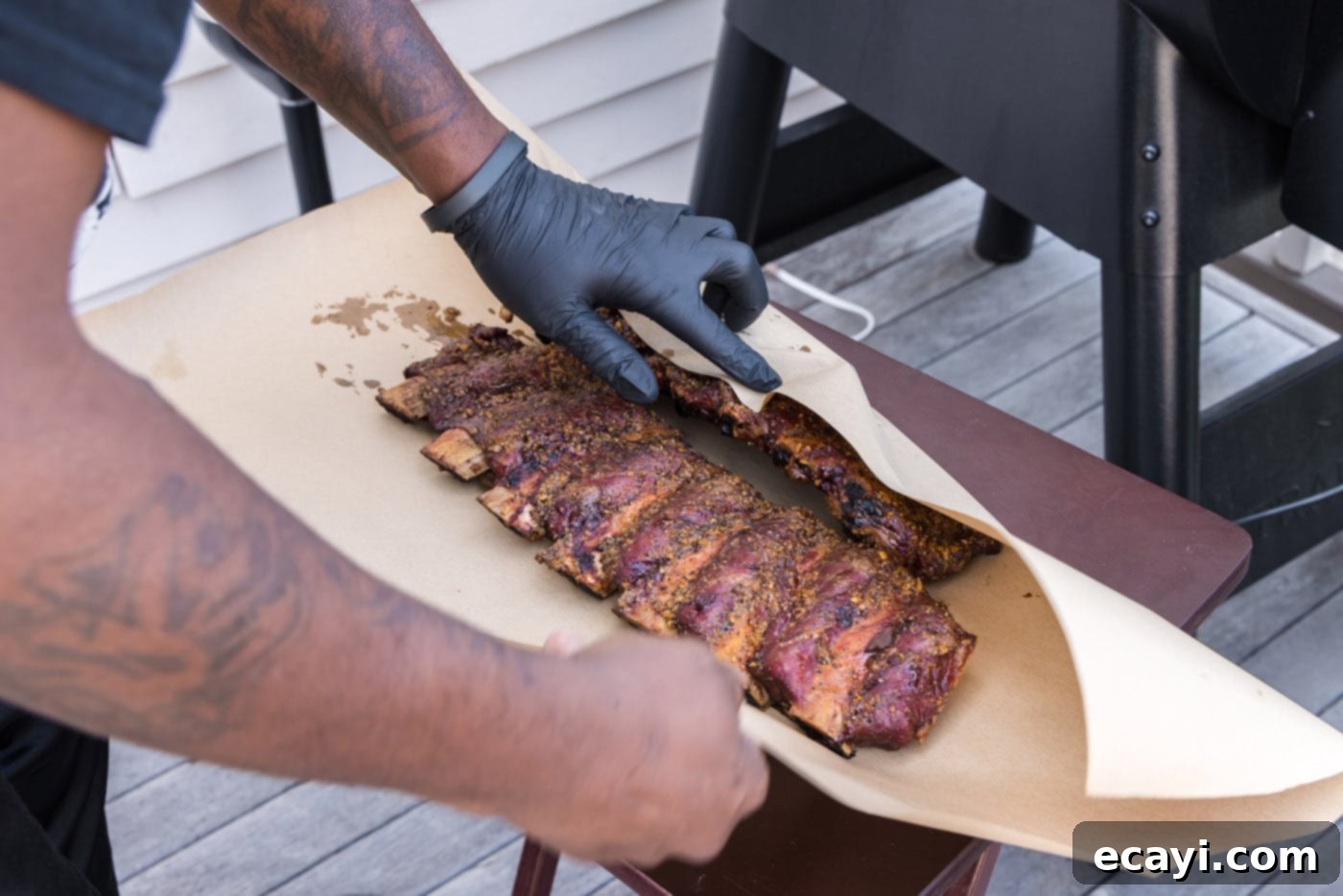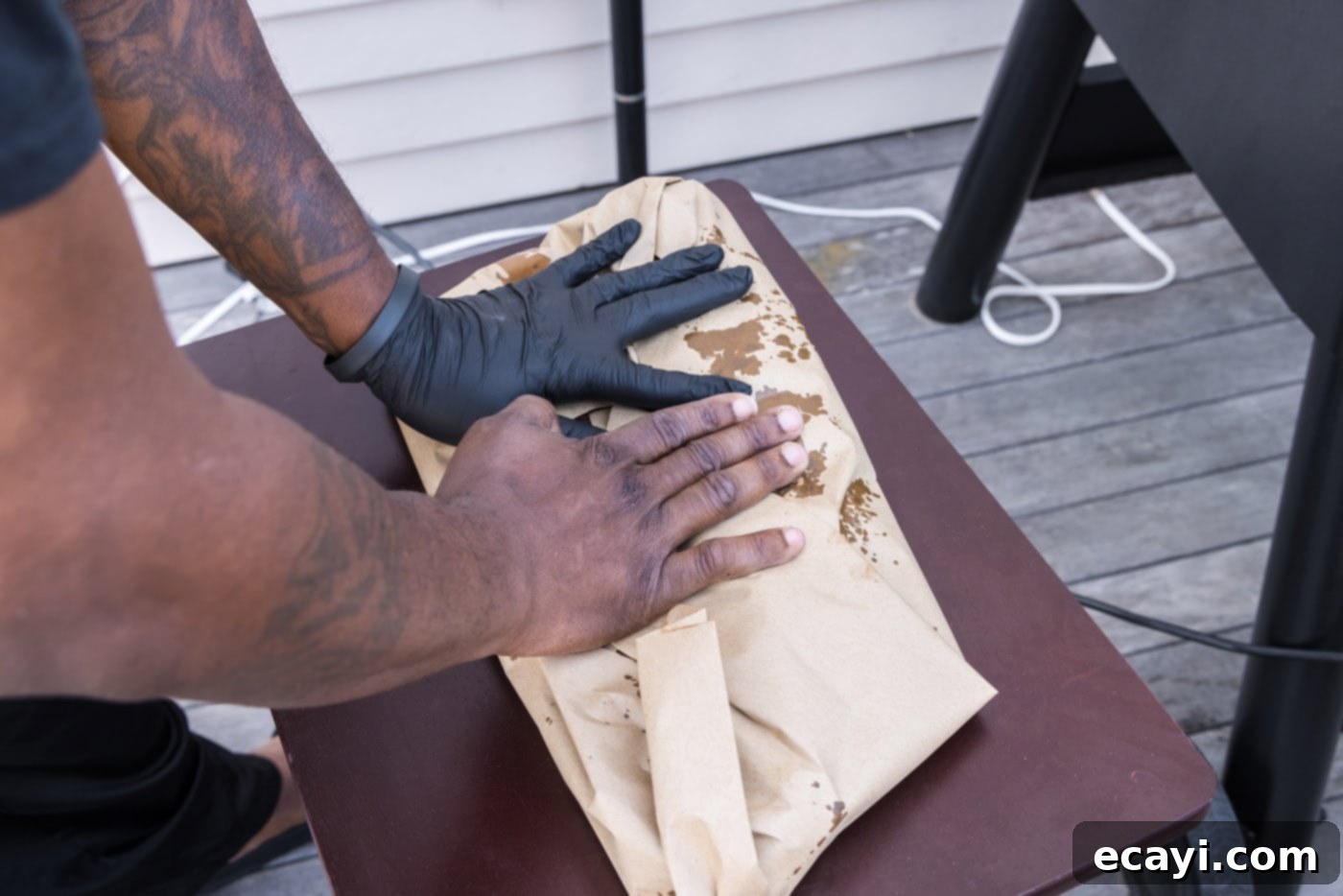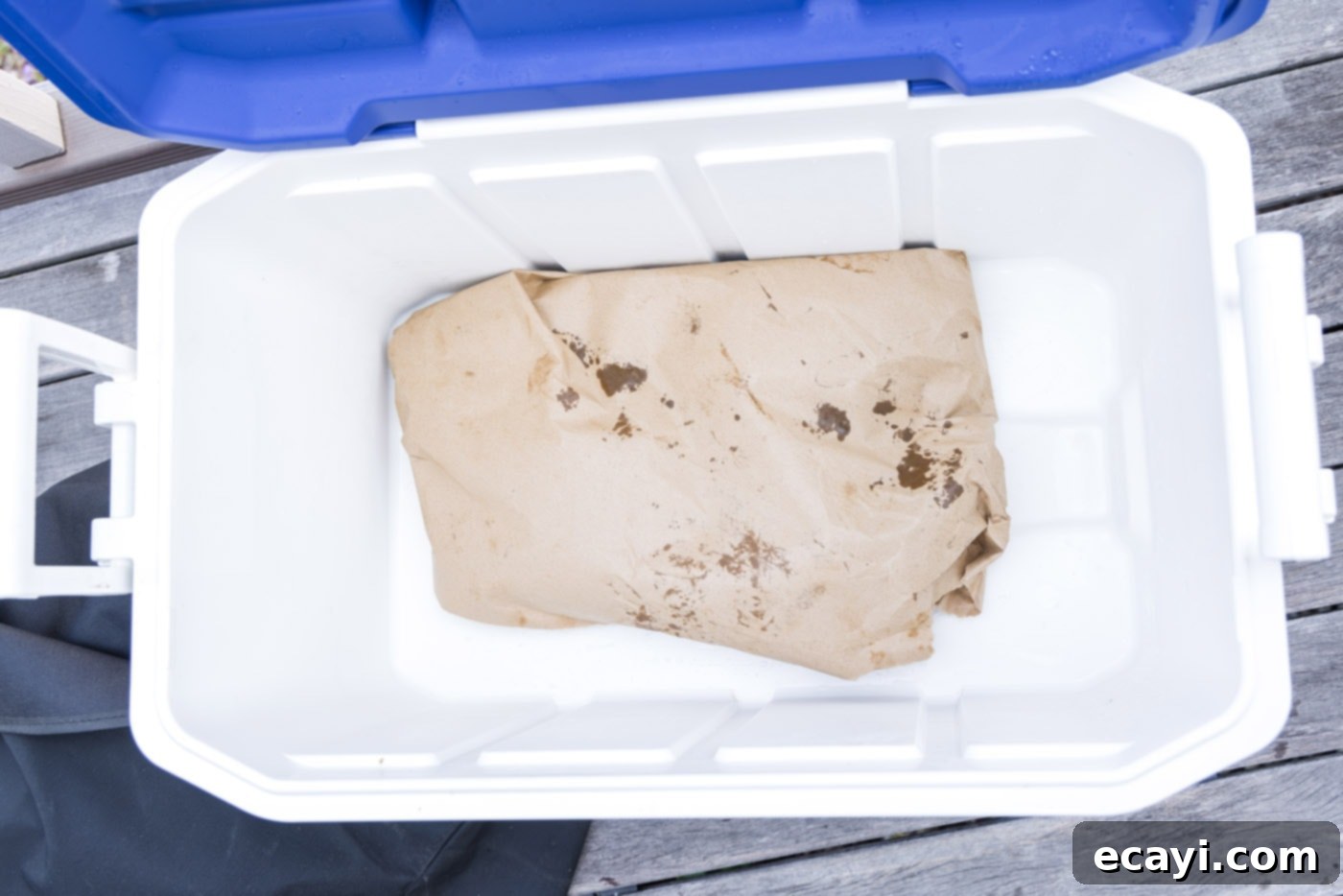Mastering Smoked Beef Ribs: Your Guide to Tender, Flavorful Perfection
Prepare yourself for an unforgettable culinary experience with savory smoked beef ribs that will have you savoring every last bite. Cooked slowly to achieve unparalleled tenderness and a mouth-watering finish, these ribs are a true barbecue masterpiece. This comprehensive guide will walk you through every step, ensuring you create perfectly smoked beef ribs that are juicy, rich in flavor, and fall-off-the-bone tender.
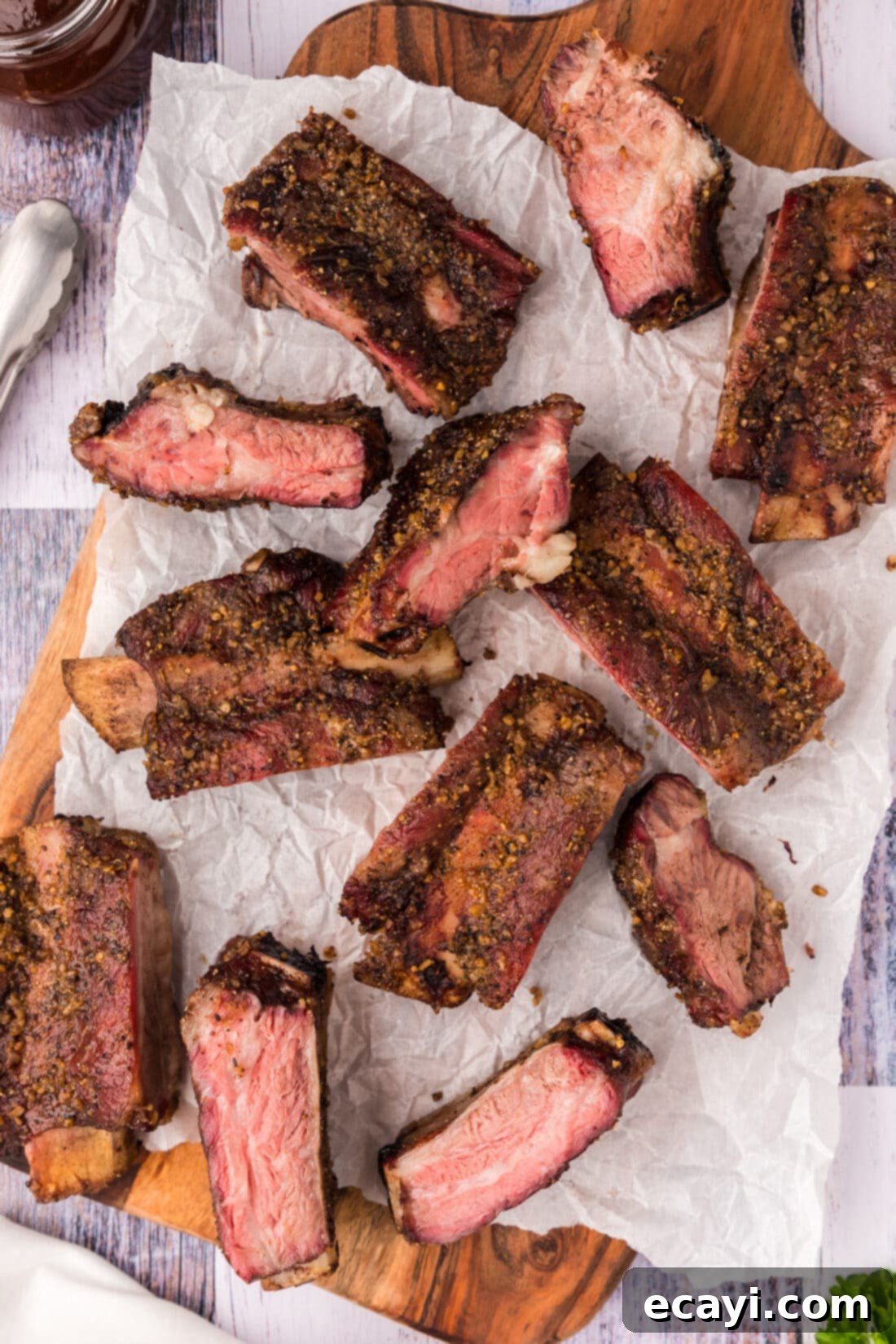
Why This Smoked Beef Ribs Recipe Guarantees Success
If you’re on the hunt for the ultimate showstopper at your next cookout, family gathering, or party, look no further than these incredible smoked beef ribs. This recipe isn’t just about cooking meat; it’s about transforming humble beef ribs into a succulent, deeply flavored delicacy that will impress even the most discerning palates. What makes this particular method so effective? It combines simplicity with a precise “low and slow” smoking technique, allowing the ribs to gradually tenderize and absorb maximum smoky goodness.
With just a handful of quality seasonings, a touch of apple cider vinegar, water, and a hint of hot sauce, these beef back ribs embark on a journey in the smoker. The magic truly happens during the extended cooking time at a consistent low temperature, which breaks down the tough connective tissues in the meat, leaving it incredibly tender and moist. The carefully balanced spray mixture ensures the ribs remain juicy throughout the long smoking process, while also helping to build that desirable, flavorful bark. The finished product is a delicate, juicy, and intensely smoky experience, ready to be served with your favorite barbecue sauce and a selection of classic sides. Get ready for finger-licking perfection!
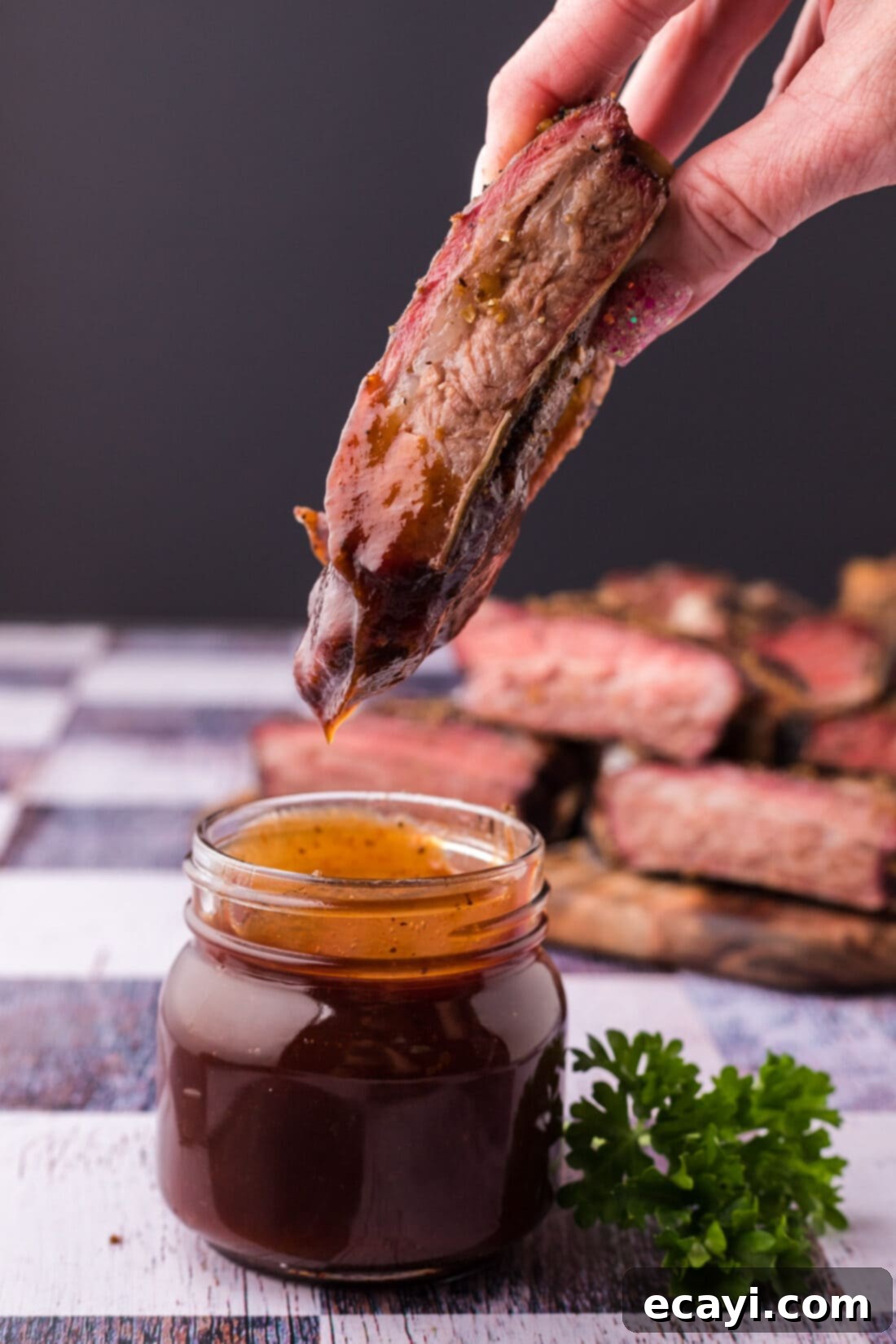
Essential Ingredients for Perfect Smoked Beef Ribs
Crafting phenomenal smoked beef ribs starts with selecting the right ingredients. While the full, precise measurements and instructions can be found in the printable recipe card at the conclusion of this article, let’s explore the components that make this dish so special. Each ingredient plays a crucial role in developing the rich flavor and achieving the desired tender texture. From the cut of beef to the aromatic spices and the essential spray mixture, every element contributes to the overall success of your barbecue venture.
The beauty of this recipe lies in its relatively simple ingredient list, proving that you don’t need a pantry full of exotic items to create an extraordinary meal. Focus on quality, and the “low and slow” smoking process will do the rest, transforming these basic components into a truly unforgettable feast. Get ready to assemble your ingredients and prepare for a smoking session that will yield delicious results.
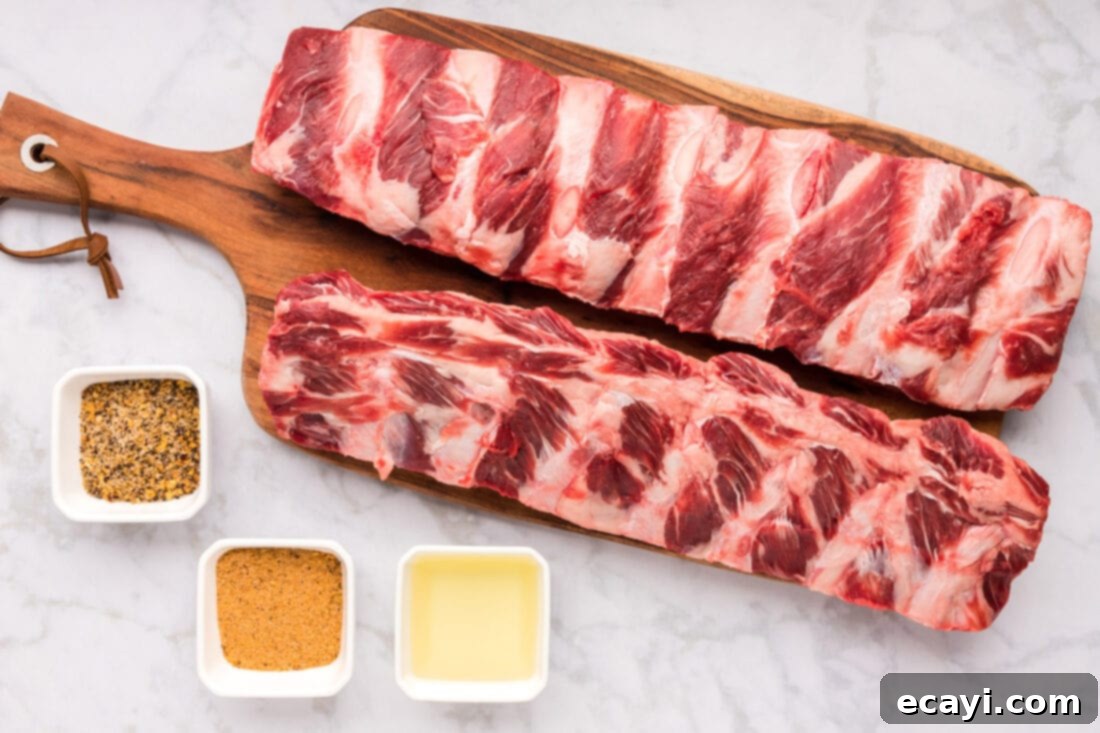
Detailed Ingredient Insights & Smart Substitutions
Understanding your ingredients is key to achieving barbecue perfection. Here’s a closer look at what you’ll need and how you can adapt the recipe to your preferences.
BEEF – The Foundation of Flavor: For this specific recipe, we highly recommend using **beef back ribs**. These ribs are cut from the prime rib section of the cow, typically found along the backbone, and are known for having meat primarily between the bones and a thinner layer on top. They offer a fantastic balance of meat and fat, which renders beautifully during a long smoke, resulting in incredibly tender and flavorful results. It’s important to note that different cuts of beef ribs require varied smoke times and techniques. For instance, **beef short ribs** (often cut from the plate or chuck section) are much meatier and thicker, demanding longer smoke times and often a different approach to ensure tenderness. If you’re interested in tackling a recipe for this alternative cut, be sure to hop on over to our dedicated guide for smoked beef short ribs. When selecting your beef back ribs, look for good marbling and a nice, consistent thickness for even cooking.
SEASONING – Building the Flavorful Bark: The magic of smoked ribs often lies in the dry rub. We’ve found that a combination of Montreal Steak Seasoning and Famous Dave’s Rib Rub, bound with a touch of olive oil, creates a robust and delicious crust. Montreal Steak Seasoning typically features coarse salt, black pepper, garlic, onion, and various spices, offering a bold, savory base. Famous Dave’s Rib Rub adds another layer of complexity, often with a sweeter, slightly smoky, and sometimes a bit spicy profile due to ingredients like brown sugar, paprika, and chili powder. The olive oil acts as an excellent binder, helping the rub adhere to the meat and dissolve some of the spices, forming that beautiful, dark “bark” during smoking. Feel free to experiment with your own preferred rib rub or seasoning blend. Popular additions to a homemade rub include garlic powder, onion powder, smoked paprika, cayenne pepper for heat, and a touch of brown sugar to aid in caramelization and bark formation. Don’t be afraid to customize and find your signature blend!
SPRAY MIX – The Secret to Moisture and Bark: The spray mixture is a simple yet crucial component, designed to help your ribs retain moisture throughout the extended smoking process and contribute to a more pronounced bark. Our blend consists of **apple cider vinegar, water, and hot sauce**. Apple cider vinegar is a barbecue staple; its acidity helps to tenderize the outer layer of the meat, brightens the flavor, and creates a better surface for smoke to adhere to. The water dilutes the vinegar, preventing it from being too overpowering, while the hot sauce (like Tabasco or Frank’s RedHot) adds a subtle kick and another layer of tanginess. As an alternative, you could experiment with a diluted beef broth, beer (lager or stout work well), or even a fruit juice like apple juice for a sweeter touch. The key is to keep the ribs moist, especially as the internal temperature rises, to prevent them from drying out and to encourage a rich, dark bark to form.
Crafting Perfection: How to Make Smoked Beef Ribs Step-by-Step
These step-by-step photos and instructions are here to help you visualize how to make this recipe successfully. You can Jump to Recipe to get the printable version of this recipe, complete with precise measurements and detailed instructions at the bottom of this post.
Making truly exceptional smoked beef ribs requires patience and attention to detail, but the process is surprisingly straightforward. Follow these steps carefully to ensure your ribs come out tender, juicy, and packed with smoky flavor.
- Prepare Your Smoker: The Foundation of Flavor
Preheat your smoker to a consistent 235°F (113°C). This low and steady temperature is crucial for the “low and slow” smoking method, which slowly breaks down connective tissues, leading to tender meat. Before you begin, ensure your smoker’s hopper is completely full of pellets (or your charcoal/wood chip supply is ample) to prevent running out midway through the long cooking process. Different wood pellets (e.g., hickory, oak, apple, cherry) will impart unique smoke flavors, so choose one that complements beef well. Hickory and oak are classic choices for beef, providing a strong, savory smoke. - Assemble the Flavor-Boosting Spray Mixture
Combine all the ingredients for your spray mixture – apple cider vinegar, water, and hot sauce – into a clean spray bottle. Close the bottle tightly and give it a good shake to ensure everything is thoroughly combined. This mixture is vital for keeping the ribs moist and contributing to the formation of a beautiful, flavorful bark during the later stages of smoking. - Craft the Aromatic Rib Rub
In a small bowl, whisk together the olive oil, Montreal steak seasoning, and your chosen rib rub. The olive oil acts as a binder, helping the dry spices adhere evenly to the meat. Ensure the mixture is well-combined, forming a slightly pasty consistency that will spread easily. - Season the Ribs Generously: The Flavor Layer
Don your gloves to keep your hands clean and prevent irritation from the spices. Using your gloved hands, thoroughly rub the seasoning mixture all over both sides of the beef back ribs. Don’t be shy – aim for complete and even coverage. Press the rub into the meat gently to ensure it adheres well. This rub will form a delicious bark and infuse the ribs with incredible flavor as they smoke.
- The Initial Smoke: Low and Slow Start
Carefully place the seasoned ribs directly onto the grates of your preheated smoker. Arrange them so there is good airflow around each rack. Smoke the ribs undisturbed for the first 2 1/2 hours at 235°F. This initial phase is crucial for establishing the smoke flavor and allowing the bark to set without interruption. Avoid opening the smoker lid during this time, as “if you’re looking, you’re not cooking!” Maintaining a consistent temperature is paramount.
- The Spraying Phase: Moisture and Bark Development
After the initial 2 1/2 hours, raise the smoker temperature to 275°F (135°C). Continue to smoke the ribs for another hour, but during this period, you will spray the ribs with your apple cider vinegar mixture every 20 minutes. This regular spritzing helps to keep the surface of the ribs moist, which prevents them from drying out and encourages the smoke to adhere, intensifying the flavor and deepening the color of the bark. Look for a rich mahogany color to develop.
- The Essential Rest: Unlocking Tenderness
Once the ribs have completed their smoking time, carefully remove them from the smoker. Immediately wrap them tightly in butcher paper. Butcher paper is preferred over aluminum foil as it allows the ribs to breathe slightly while still insulating them, which helps to preserve the bark’s texture. Place the wrapped ribs inside an empty cooler (without ice). Close the lid and let them rest for a minimum of 30 minutes, and ideally up to 60 minutes. This resting period is absolutely critical; it allows the muscle fibers to relax and reabsorb the juices, resulting in incredibly tender, moist, and flavorful ribs that practically fall off the bone. The cooler acts as an excellent insulator, maintaining the ribs’ warmth during this crucial step.


Frequently Asked Questions & Expert Tips for Smoked Beef Ribs
Resting beef ribs after smoking is an absolutely critical step that significantly impacts the final tenderness and juiciness of your meat. It allows the meat to relax, which in turn helps the bones separate from the meat easily and allows for a more even distribution of the delicious juices throughout the beef. To properly rest, we recommend wrapping the ribs tightly in butcher paper (or heavy-duty aluminum foil if butcher paper isn’t available) and then placing them inside an empty cooler. Close the lid to create an insulated environment. Let them rest for a minimum of 30 minutes, but ideally 60 minutes. Allowing the beef to rest for this longer period will result in ultra-tender, succulent ribs, and the cooler plays a crucial part by insulating the beef, keeping it warm and allowing the reabsorption process to occur perfectly.
Proper storage is key to enjoying your smoked beef ribs for days to come. Store any leftover ribs in an air-tight container. Placed in the refrigerator, they will maintain their quality and flavor for 3-4 days. For longer storage, you can individually wrap portions in plastic wrap and then aluminum foil before freezing for up to 3 months. To reheat, gently warm in the oven at a low temperature (around 250°F) until heated through, or wrap in foil and place on the smoker for a short period to regain some smoky flavor.
For beef ribs, strong, robust woods are typically preferred to complement the rich flavor of the meat. Hickory is a classic choice, offering a bold, smoky flavor. Oak is another excellent option, providing a medium-strong smoke that pairs wonderfully with beef. For a slightly milder, sweeter smoke, you could consider apple or cherry wood, often blended with a stronger wood like oak. Experimenting with different wood types can help you find your personal favorite smoke profile.
While internal temperature is important for food safety, tenderness is the primary indicator of doneness for ribs. For optimal tenderness, beef ribs are typically done when they reach an internal temperature between 200-205°F (93-96°C). However, the “bend test” is often more reliable for ribs: pick up one end of a rack of ribs with tongs. If the rack bends significantly and the meat begins to tear or crack on the surface, they are likely done. The meat should also easily pull away from the bone.
Yes, you can certainly use aluminum foil if butcher paper isn’t available. Foil will also trap moisture and help the ribs tenderize during the rest. However, butcher paper is often preferred by pitmasters because it allows some airflow, which helps to preserve the crispy “bark” that forms on the ribs during the smoking process. Foil can sometimes lead to a slightly steamed texture, which may soften the bark. Both methods will lead to tender ribs, but butcher paper offers a subtle advantage in bark retention.
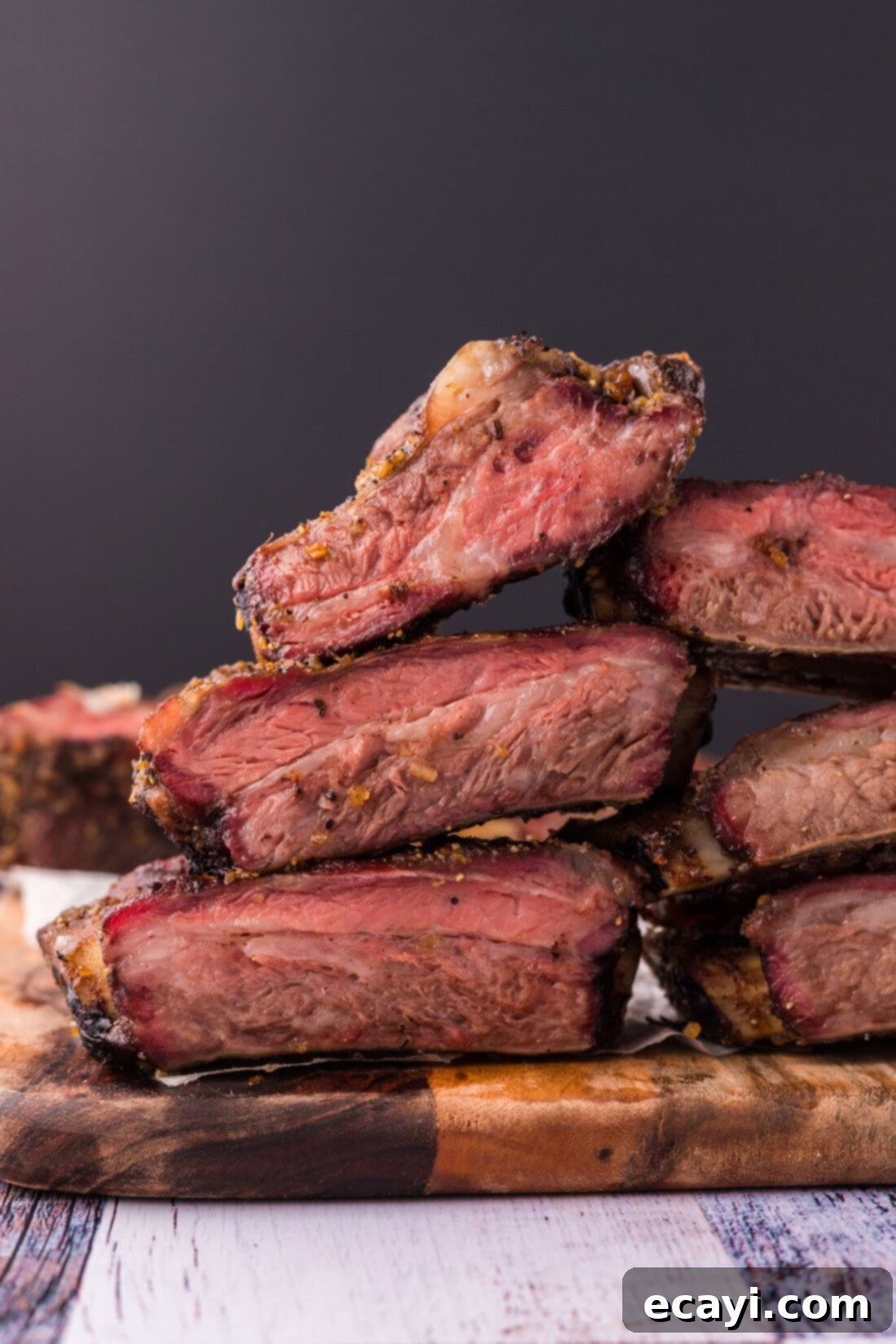
Delightful Serving Suggestions for Smoked Beef Ribs
Once your perfectly smoked beef ribs are rested and ready, the next step is to pair them with complementary sides that enhance their rich flavor. The possibilities are truly endless, allowing you to create a complete and satisfying meal for any occasion. Some of our absolute favorite classic barbecue side dishes that perfectly accompany these tender ribs include:
- Creamy Potato Salad: A cool, tangy, and rich potato salad, like our famous Mom’s Best Potato Salad, offers a wonderful contrast to the smoky, savory ribs. Its comforting texture and refreshing taste cleanse the palate between bites of meat.
- Homemade Macaroni and Cheese: Nothing says comfort like a generous helping of warm, gooey easy stovetop macaroni and cheese. The creamy, cheesy goodness is a perfect pairing for the robust flavor of beef ribs, creating a truly indulgent experience.
- Crisp Coleslaw: A refreshing and crunchy coleslaw, such as our copycat KFC Coleslaw recipe, provides a light and vibrant counterpoint to the richness of the ribs. The crisp cabbage and tangy dressing add a delightful textural and flavor balance.
- Sweet Corn on the Cob: Whether grilled, boiled, or steamed, corn on the cob brings a touch of natural sweetness that beautifully complements the smoky ribs. It’s a quintessential barbecue side that’s always a crowd-pleaser.
Beyond these classics, consider other sides like baked beans, cornbread, green bean casserole, or a fresh garden salad. And of course, no plate of smoked beef ribs is complete without a generous helping of your favorite barbecue sauce for dunking, drizzling, or brushing on top just before serving. A sweet and tangy sauce can highlight the smokiness, while a spicier one can add an exciting kick!
Explore More Delicious Rib Recipes
If you’ve enjoyed mastering these smoked beef ribs, you’re likely eager to explore the wonderful world of rib cookery further! Ribs come in many forms, and each preparation method unlocks unique flavors and textures. Whether you prefer beef or pork, smoked or oven-baked, there’s a rib recipe for every occasion and preference. Dive into our collection of other fantastic rib recipes:
- Savory Rib Tips
- Perfect Oven Beef Ribs
- Quick Instant Pot Beef Ribs
- Mouth-Watering Smoked Beef Short Ribs
- Tender Boneless Beef Short Ribs
I love to bake and cook and share my kitchen experience with all of you! Remembering to come back each day can be tough, that’s why I offer a convenient newsletter every time a new recipe posts. Simply subscribe and start receiving your free daily recipes!
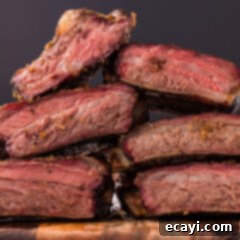
Smoked Beef Ribs
IMPORTANT – There are often Frequently Asked Questions within the blog post that you may find helpful. Simply scroll back up to read them!
Print It
Pin It
Rate It
Save ItSaved!
Ingredients
- 3 ½ pounds beef back ribs
- 3 Tablespoons olive oil
- 1 Tablespoon Montreal Steak Seasoning
- 1 Tablespoon Famous Dave’s Rib Rub
Spray Mixture
- ½ cup apple cider vinegar
- ½ cup water
- 1 teaspoon hot sauce
Things You’ll Need
-
Smoker we used a Traeger
-
Spray bottle
-
Vinyl gloves
-
Butcher paper
-
Cooler
Before You Begin
- You can use any rib rub or seasoning combination you prefer.
- Spraying the ribs will help them retain moisture while smoking.
- Resting beef ribs after smoking helps the meat to relax, which in turn helps the bones separate from the meat easily. Resting will also redistribute the juices evenly throughout the beef. To do so, we like to wrap the ribs in butcher paper (or aluminum foil) and then place them in a cooler to rest for 30-60 minutes. Allowing the beef to rest for a longer period of time will result in ultra-tender ribs, and the cooler plays a crucial part by insulating the beef during that process.
- Store leftovers in an air-tight container kept in the refrigerator for 3-4 days.
Instructions
-
Preheat smoker to 235 F. Be sure that your hopper is full of pellets before you begin so that you don’t run out during the long cooking process.
-
Add ingredients for the spray mixture to a spray bottle. Close and shake to combine.
-
In a small bowl whisk together olive oil, Montreal steak seasoning and rib rub.
-
Using gloved hands, rub mixture all over both sides of the ribs.
-
Place ribs on the preheated smoker and smoke for 2 1/2 hours undisturbed.
-
Raise temp to 275 F and smoke for another hour, spraying every 20 minutes.
-
Remove from smoker then wrap in butcher paper. Place wrapped ribs inside an empty cooler. Close the lid and let rest 30-60 minutes.
Nutrition
The recipes on this blog are tested with a conventional gas oven and gas stovetop. It’s important to note that some ovens, especially as they age, can cook and bake inconsistently. Using an inexpensive oven thermometer can assure you that your oven is truly heating to the proper temperature. If you use a toaster oven or countertop oven, please keep in mind that they may not distribute heat the same as a conventional full sized oven and you may need to adjust your cooking/baking times. In the case of recipes made with a pressure cooker, air fryer, slow cooker, or other appliance, a link to the appliances we use is listed within each respective recipe. For baking recipes where measurements are given by weight, please note that results may not be the same if cups are used instead, and we can’t guarantee success with that method.
